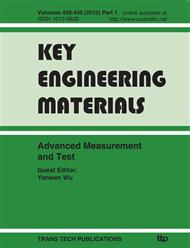[1]
H. F. Wang,H. Li,H. Chen.Application of Cell Immune Response Modeling to Power System Voltage Control by STATCOM [J] .IEE Proc. Gener. Transm. Distrib. 2002, 149(1):101~107.
DOI: 10.1049/ip-gtd:20020080
Google Scholar
[2]
X. Yixin, M.L. On, H. Zhenyu, C. Shousun, Z. Baolin, Fuzzy logic damping controller for FACTS devices in Interconnected power systems, IEEEConf. 11 (1999) V591-V594.
DOI: 10.1109/iscas.1999.777641
Google Scholar
[3]
P.S. Sensarma, K.R. Padiyar, V. Ramanarayanan, Anaysis and performance evaluation of distribution STATCOM for compensating voltage fuctuations, IEEE Trans. Power Delivery 16 (2) (2001) 259-264.
DOI: 10.1109/61.915492
Google Scholar
[4]
P. Rao, M.L. Crow, Z. Yang, STATCOM control for system voltage control applications, IEEE rans. PowerDelivery15 (4) (2000).
Google Scholar
[5]
P.W. Lehn, M.R. Travani, Experimental evaluation of STATCOM closed loop dynamics, IEEETrans. Power Delivery13 (4)(1998)1378-1384.
DOI: 10.1109/61.714511
Google Scholar
[6]
C. Li, Q. Jiang, Z. Wang, D. Retzmann, Design of rule-based controller for STATCOM, IEEE Conf. 11 (1998)467-472.
Google Scholar
[7]
Jen Hung Chen, Wei Jen Lee, Mo Shing Chen. Using a Static Var Compensator to Balance a Distribution System., IEEE Trans. Ind. App., 1999, 35 (2): 298~304.
DOI: 10.1109/28.753620
Google Scholar
[8]
N. Martins, L. T. G. Lima. Determination of Suuitable Locations for Power System Stabilizers and Static VAR Compensators for Damping Electromechamical Oscillations in Large Scale Power Systems [J]. IEEE Tramsactions on Power Systems, 1997, 5(4): 1455-1469.
DOI: 10.1109/59.99400
Google Scholar
[9]
Feng Yucheng, Chen Chen. The comparison and analyze for static synchronous compensator and traditional static idle work compensator [J] North China electric power, 2005. 9, 33(9), 16 1.
Google Scholar
[10]
Xie Xiaorong, Cui Wenjin, Tang Yiliang. STATCOM idle current robust adaptive control. China electrical engineering journal 2001. 4, 21(4).
Google Scholar
[11]
Dai Wenjin, He Zhenghai, Lu huazhong. Research in the application of ASVG in JiangXi electric power system. Proceedings of the 5thInternational Conference on Advances in Power System Control, Operation and Management, APSCOM 2000, Hong Kong. October 2000: 124~129.
DOI: 10.1049/cp:20000377
Google Scholar
[12]
Gibbard M.J., Vowles D.J., Pourbeik P., Interactions between and Effectiveness of, Power System Stabilizers and FACTS Device Stabilizers in Multimachhine Systems [J]. IEEE Transactions on Power Systems, 2000, 15(2).
DOI: 10.1109/59.867169
Google Scholar


